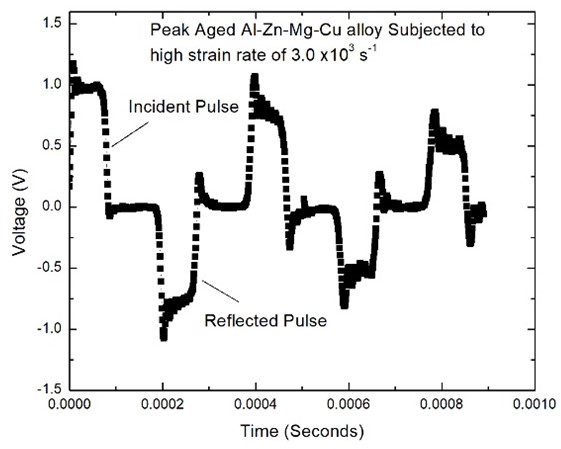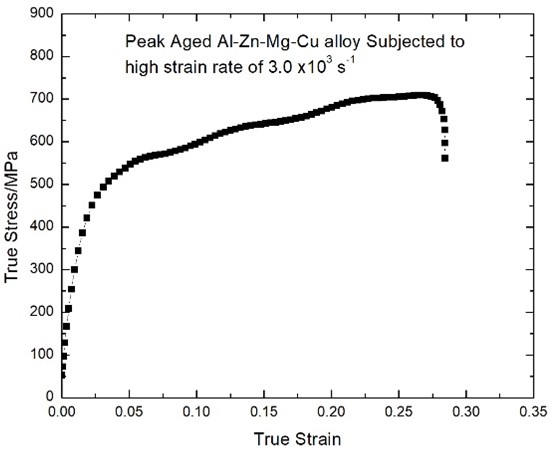
Introducing Strain Rate as a Manufacturing Parameter
Objective/Contributions:
- To improve the strength of the 7xxx Aluminum alloys for automotive applications.
- To provide a fundamental understanding of the strengthening mechanisms of Aluminum alloys and to understand Precipitates-dislocation interaction after the deformation process under different strain rates.
- To bridge the gap between fundamental research and industrial applications.
Outcome:
Primary experimental results of the Al-Zn-Mg-Cu alloy under 3××103 s-1 compression at using Split Hopkinson pressure bar (SHPB).
 |
 |
Fig(a) Fig(b)
Fig. (a) shows the True Stress-True Strain curves of the peak-aged Al-Zn-Mg-Cu alloy displaying the presence of strain rate sensitivity. The yield strength of the alloy under high strain rate compression is higher than the standard value of the yield strength of the peak-aged Al-Zn-Mg-Cu alloy under Quasi-Static compression. It is also observed the presence of work hardening as depicted in Fig. (a). Fig. (b) shows a typical voltage-time graph during the compression test of the alloy using SHPB presenting the incident and reflected pulse waves.